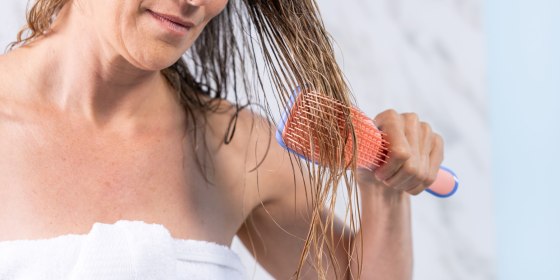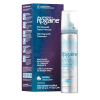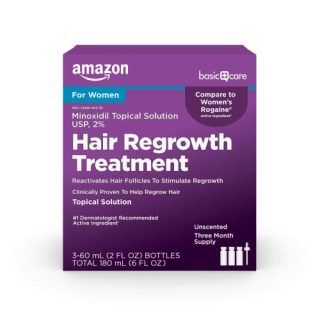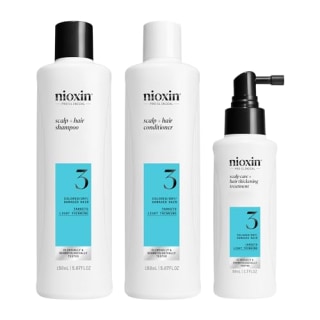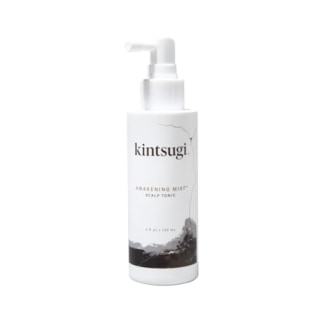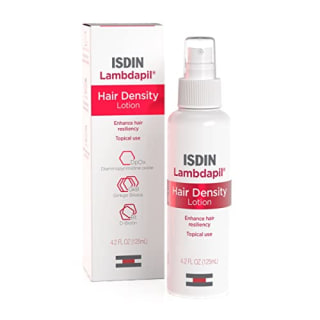When you notice a clump of hair in your brush or a few more strands than usual going down the drain on a wash day, it's natural to feel a little concerned.
But the truth is, we're all losing hair every day. "All the hair on our body has a life cycle. The hair on our scalp is the longest lifecycle — the hair grows pretty long and then it’s shed and you grow new hair," says Dr. Joyce Davis, a board-certified dermatologist and dermatologic surgeon in New York City.
In general, you lose about 100 hairs a day, Davis says. So in some cases, the strands that you're shedding could just be part of your hair's normal growth and loss cycle. But if there seems to be more than usual, it could be a sign of something more serious. Below, we spoke to dermatologists about how to tell the difference.
What is hair shedding? | What is hair loss? | How can you tell if it’s hair shedding or hair loss? | Best products for hair loss, according to experts | FAQs | How we chose | Meet our experts
What is hair shedding?
Hair shedding can refer to the normal loss that comes from your hair's natural growth cycle. Your hair goes through different phases, explains Dr. Christine M. Shaver, a board-certified dermatologist at Bernstein Medical Center for Hair Restoration in New York City: Anagen (growth), catagen (transition) and finally, telogen (shedding). Meaning, that you're regularly growing and shedding hair.
The term can also refer to the temporary loss, known as telogen effluvium. "A true telogen effluvium is non-scarring, non-permanent hair loss,” Dr. Robert Finney, a board-certified dermatologist in New York City previously told us. “And it’s usually something that occurs for a finite amount of time, whether it be six weeks or several months."
Telogen effluvium typically lasts two to three months, Shaver says. It can be brought on by a number of factors, including stress, medication changes, illness, pregnancy or even the changing of the seasons.
What is hair loss?
In the case of hair thinning or loss, which is most commonly caused by genetics (androgenetic alopecia), hair becomes shorter and thinner with each hair cycle. This is called miniaturization, Shaver explains.
If left untreated, this type of hair loss can become permanent. Other common types of hair loss include scarring alopecia, alopecia areata and traction alopecia.
How can you tell if it's hair shedding or hair loss?
While it's normal to shed around 100 hair per day, Shaver explains, "hair loss in excess of about 150 hairs per day raises concern that stress may be causing an abnormal amount of shedding."
To get a general idea, you can count the hairs that you find in the shower or falling off of your head on a given day, Davis says. If the number exceeds 150, it may be time to see a specialist.
Speaking of, no matter how much hair you're losing, if you are concerned, both experts agree that the best course of action is to check with your dermatologist, as they can run tests and determine the potential causes and severity of any loss or shedding.
From there, they can also help you find the best possible treatment. Though, for anyone interested in getting a head start at treating their excess shedding or thinning at home, we're sharing some of the hair loss solutions that experts recommend.
Best products for hair loss, according to experts
Amazon Basic Care Minoxidil Topical Solution
- Contains 2% minoxidil
- Unscented
- Should be used 2x per day
Size: 6 oz. | Key ingredients: Minoxidil
When it comes to over-the-counter treatments for hair loss, Minoxidil is by far the most commonly recommended by experts. It's been clinically proven to help with hair loss.
It should be noted that it can lead to increased shedding when you start using it. “For people who are already shedding, it can be a little alarming,” Finney says. “So I always counsel that it’s normal, it’s just kicking your hair that was about to go into the resting phase out. It’s going to regrow, and it’s going to regrow healthier.”
Virtue Minoxidil 5% Foam (Set of 2)
- Absorbs quickly
- Gives hair more texture
- Some say it's drying
Size: 2.11 oz. | Key ingredients: Minoxidil
“This is a tried-and-true treatment that promotes faster, thicker hair growth. Newer formulations allow for easier, less messy application,” Dr. Leah Jacob, an assistant professor of dermatology at Tulane University, previously told us.
The foam is designed to be applied once a day to areas of hair loss.
Women’s Rogaine 5% Minoxidil Foam
- Unscented
- FDA-approved for hair growth
- Complaints of difficult use
Size: 2.11 oz. | Key ingredients: Minoxidil
Rogaine's Minoxidil formula is a popular choice among shoppers with more than 8,100 five-star ratings. Unlike other ones, you only need to apply this foam formula once per day. According to the brand, the foam works in five ways to help reactivate your natural hair growth cycle. The brand says that can take at least four months to see results.
Nioxin Scalp + Hair Thickening System 2
- Hydrating
- Fresh scent
- Three-step treatment
Size: 5.07 oz. | Key ingredients: Caffeine, peppermint oil, niacinamide
Board-certified dermatologist Dr. Angela J. Lamb previously recommended this three-step hair thickening system for those with thinning hair.
According to the brand, eight out of 10 people who used the trio — shampoo, conditioner and treatment — noticed thicker, fuller hair in just 30 days.
Kintsugi Awakening Mist
- Suitable for all hair types
- "Ultra-lightweight"
- Use twice per day
Size: 4 oz. | Key ingredients: Redensyl, niacinamide, keratin
Dermatologist Dr. Michelle Henry previously shared that Redensyl has been shown to have results “similar to Minoxidil," but without some of the common side effects. It also features ingredients like green tea, keratin and niacinamide. The tonic promises to add volume and density to your hair while minimizing buildup.
To use, the brand suggests cleansing and towel-drying your hair before spraying on your scalp one section at a time.
Isdin Lambdapil Hair Loss Lotion
- Nice scent
- Increases thickness
- Small amount of product
Size: 4.2 oz. | Key ingredients: Diaminopyrimidine oxide, ginkgo biloba, D-biotin
Henry also recommended this formula, which contains diaminopyrimidine oxide, ginkgo biloba and biotin, as an option without Minoxidil. It's designed to be for both men and women, and the brand says that it won't leave hair feeling greasy.
FAQs
How we chose
We spoke to experts about the differences between hair loss and shedding. From there, we pulled previously expert recommendations for the best products for thinning hair.
As an editorial team, we independently create content and determine coverage based on research, reporting and what we think readers would like to read about. The goal of our content is to provide a service and inform readers who are on the hunt for the latest products to help make their life better. Items are sold by retailer, not TODAY. Pricing and availability are accurate as of publish time.
Meet our experts
- Dr. Joyce Davis, MD, is a board-certified dermatologist and dermatologic surgeon. She practices medical as well as cosmetic dermatology and she has a special interest in treating hair loss.
- Dr. Christine M. Shaver, MD, is a board-certified dermatologist at Bernstein Medical Center for Hair Restoration in New York City. She is also a Mohs micrographic surgeon.
- Dr. Robert Finney, MD, is a board-certified dermatologist in New York City. She is an expert in medical, surgical, and cosmetic dermatology.
- Dr. Leah Jacob, MD, is an assistant professor of dermatology at Tulane University. She treats a spectrum of skin diseases in both kids and adults.
- Dr. Angela J. Lamb, MD, is a board-certified dermatologist in New York City. She is the director of the Westside Mount Sinai Dermatology Faculty Practice and an associate professor of dermatology.
- Dr. Michelle Henry, MD, is a board-certified dermatologist in New York City. She is the founder and CEO of Skin & Aesthetic Surgery of Manhattan.
